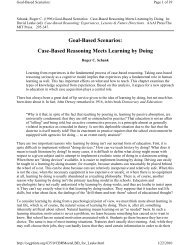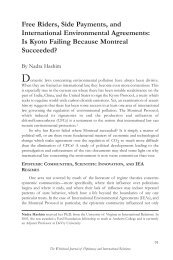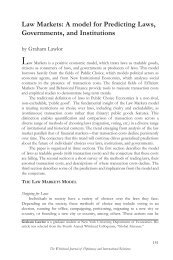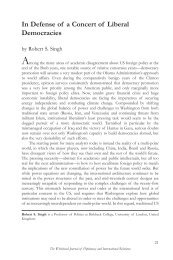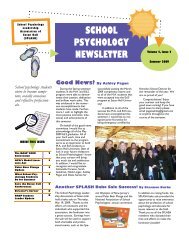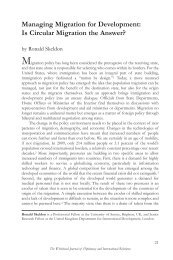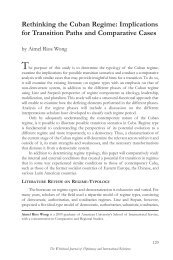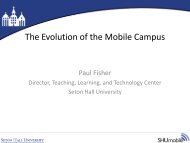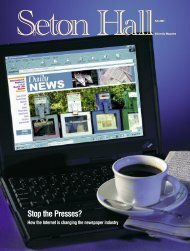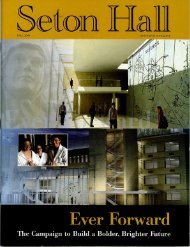fall 2007 - Seton Hall University
fall 2007 - Seton Hall University
fall 2007 - Seton Hall University
You also want an ePaper? Increase the reach of your titles
YUMPU automatically turns print PDFs into web optimized ePapers that Google loves.
22<br />
Mitchel comes to this project with “an unwavering belief<br />
that urban schools control enough variables to ensure<br />
every child learns and masters the identified curriculum.”<br />
Moreover, his conviction grows from solid experience.<br />
In 1975, Mitchel, then a principal at the Franklin School<br />
in Newark, launched a program to turn around that underperforming<br />
school of 1,240 students. The school eventually<br />
won accolades from the New York Times as “one of the best”<br />
in the state, and was featured on CNN and CBS. But, turning<br />
around a low-performing school is a process, not an event,<br />
Mitchel is quick to add. “It took some four years of hard<br />
work, with the philosophy of each day, each week, each<br />
month getting better and better.”<br />
More than 30 years later, “the journey to create a New<br />
Newton is off to its own great start with a new powersharing<br />
system, a new academic focus and training, some<br />
new staff and, most important, new hope,” Mitchel says.<br />
For instance, the “governance committee” of union, academic<br />
and parent representatives now shares power with the<br />
principal and district over budget, hiring and academic<br />
policy, and teachers are actively involved in all improvement<br />
efforts. The union has even agreed to remove teachers<br />
who cannot or will not adapt to the school’s new approach.<br />
At the outset of the project, the <strong>Seton</strong> <strong>Hall</strong> faculty,<br />
along with the Newark teachers union and other experts,<br />
completed a comprehensive assessment of the school’s<br />
GETTING BETTER EACH DAY: Above center, Charles Mitchel<br />
and Newton Street School Principal Willie Thomas envision success<br />
through focusing on three major areas: teaching and learning, school<br />
culture and leadership. Other College of Education and Human<br />
Services professors who have helped Newton extensively are Dan<br />
Gutmore, Ph.D., Barbara Strobert, Ed.D., and Lourdes Zaragosa<br />
Mitchel, Ed.D. ’91. Photo at top left by Richard Perry/The New York Times;<br />
photos at center and top right by Ed Murray/The Star-Ledger<br />
needs and identified three major areas to focus on:<br />
teaching and learning, school culture and leadership. The<br />
team then formed three study groups to analyze Newton’s<br />
strengths and areas to improve, and based on the groups’<br />
recommendations, held a five-day training session with<br />
60 teachers and administrators over the summer.<br />
Out of this collaboration came what Mitchel calls<br />
“a vision for the New Newton” — one that will transform<br />
daily life inside the school building, which was built in<br />
1871, and will equip its students for the 21st century.<br />
The joint efforts have also created a teacher population<br />
that is highly motivated. Not only have teachers been redecorating<br />
and sprucing up their classrooms on their own<br />
time, but they also recently petitioned the school’s administration<br />
to extend the school day by one hour, to 4 p.m.<br />
PAYING BACK AN OLD DEBT<br />
In one sense, all of this “empowerment” stems from a<br />
45-year-old piece of advice that came from John Murphy,




